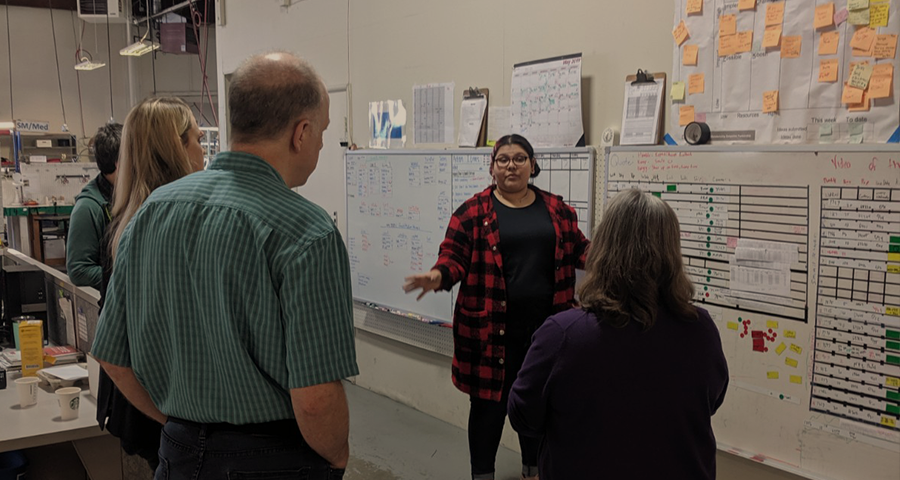A job task analysis helps break down a job into smaller, manageable chunks for on-the-job training. Whether you are developing work instructions or writing a job description, breaking down a job into a set of daily, weekly, and monthly tasks can seem daunting. Which tasks do you start with? How do you decide which tasks to include? What if tasks are shared across different jobs? How detailed should the tasks be? What if there are subtasks?
Before you get overwhelmed, take a minute to close your eyes and breathe. Then open them again and keep them open.
The first step in creating a job task analysis is to observe
Whether it is your job or someone else’s, take a day to observe the job. Don’t worry about writing down every little thing that happens. It is better to get an idea of the big picture, the different tasks a person does in one day, week, and month.
Don’t forget to ask questions. Make sure that the person doing the job knows that this is not an interrogation, and you are not testing them. You simply want to understand the ‘why?’ behind what they are doing during each step.
‘Why?’ is the most important question to ask. It leads you to all the good stuff: the nuances, the motivation, the standards, the knowledge, and the skills that underlie each task.
The next step is to create a Job Task Analysis Model
For a given job, break the job down into its Major Outcomes. For example, for a Payroll Administrator, a Major Outcome is Processing Employee Paychecks. Under each Major Outcome, list the Tasks. For our example, a Task under Processing Employee Paychecks might be Enter Employee Timecards in Payroll Software.

The Job Task Analysis Model will give you an idea of how many Tasks are part of each job. For each of those Tasks, you will fill out a Job Task Analysis Form.
This is list of all the steps (subtasks) to accomplish a Task. For each subtask, you will ask three questions:
- What do you need to know or be able to do to perform this task?
- Can you teach (and can someone learn) the task in 30 minutes?
- Is this a new task (not learned at a lower job level)?
The first question will help you uncover the knowledge needed to perform the Task. This information may be the theory behind a given Task. In our example, the knowledge behind Enter Employee Timecards in Payroll Software might be Typing or Payroll Accounting 101.
The second question checks whether the subtask should be broken into even smaller tasks. For example, if one of the subtasks of Enter Employee Timecards in Payroll Software was Learn Payroll Software, this step would likely not be teachable in 30 minutes or less – which is a good indicator that this subtask should be broken down in its own Job Task Analysis Form.
The third question asks whether each subtask is a ‘new’ task (not previously learned at a lower job level). If not, there is no need to create additional training materials because presumably they have been created for the previous job.
Once all the subtasks are completed, you can move on to developing your training modules or writing your job description!
A Job Task Analysis should not be completed in isolation
Don’t forget that when creating a Job Task Analysis Model and filling out the Job Task Analysis Forms, it is important to do this with the employee(s) that perform the job. You will need to gain consensus on each Major Outcome, Task, and associated subtasks. If there is more than one way to perform a Task, ask what is the BEST way?
Getting together and coming to consensus on this will reveal different approaches, styles, opinions, and perspectives on each job you are analyzing. This is an excellent time to get clarity, alignment, and buy-in on what it takes to successfully accomplish the requirements of a job.




